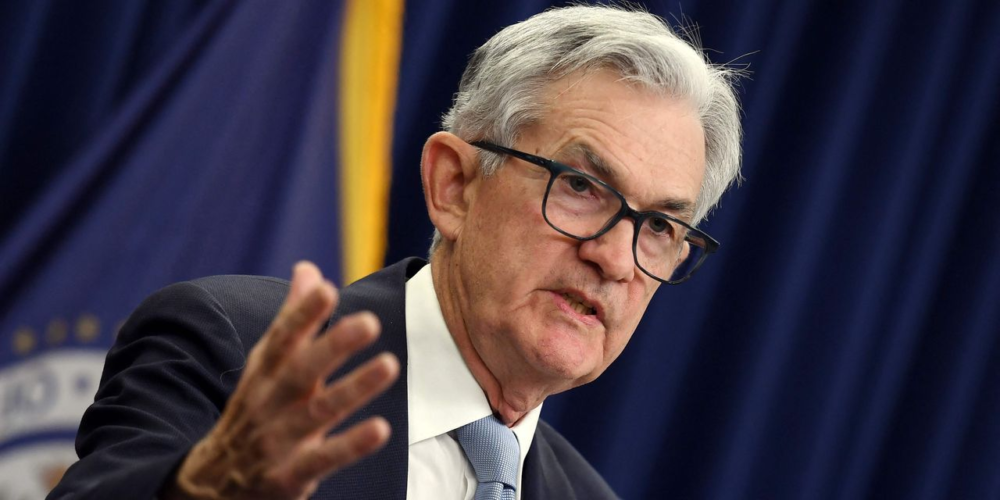U.S. stocks could see a sharp selloff later this week if Federal Reserve Chairman Jerome Powell again pushes back against expectations that the central bank could cut interest rates later this year, according to a top U.S. equity strategist at Morgan Stanley.
A more “hawkish” message from Powell at Wednesday’s Fed meeting could trigger a “near-term negative surprise for equities” after two straight months of gains for the S&P 500, according to Michael Wilson, Morgan Stanley’s chief U.S. equity strategist and chief investment officer.
See: Stock-market investors want the Fed to answer this crucial question when it meets this week
Anything the Fed does to move the bond market to price in more rate hikes could also feed through to stocks by sending the main indexes lower, Wilson said. He thinks investors expecting multiple Fed rate cuts later this year will ultimately be disappointed.
A series of leading economic indicators tracked by Morgan Stanley show demand in the U.S. economy has continued to weaken recently, supporting a view at the bank that a downturn will ultimately inspire the Fed to stop hiking interest rates later this year.
Fed funds futures traders, however, expect the Fed to deliver multiple rate cuts before the end of 2023, following one final hike of 25 basis points this week.
The Fed is expected to raise the upper band of its policy rate target to 5.25% on Wednesday, according to the CME’s FedWatch tool, which shows traders see a more than 90% chance of a rate hike. But further out, it shows traders expect the policy rate to fall to 4.75% by year’s end.
This disconnect represents a risk for stocks. “From our conversations, we’ve found investors are less focused on the upcoming Fed meeting as a potential risk event for equities. We believe that equities are priced for an optimistic policy outcome (rate cuts in ’23 without the growth downside),” Wilson said in a note to clients on Monday.
While the S&P 500
SPX,
has gained more than 8% since the beginning of the year, the index’s gains have been driven by a handful of mega cap technology stocks like Microsoft Corp. and Apple Inc. — stocks that endured a punishing selloff in 2022. For its part, the Nasdaq Composite Index
COMP,
has come roaring back this year, having risen more than 16.6%, more than double the advance of the S&P 500.
The Dow Jones Industrial Average
DJIA,
is up 3.2% so far this year.
Meanwhile, the large-cap S&P 500 rose 1.5% in April, according to FactSet data, following a 3.5% gain in March. On Monday, it was trading up 10 points, or 0.2%, at 4,179, hovering just under the 4,200 level that has provided a durable ceiling for stocks since August, according to FactSet data. It’s also just shy of its highest closing level of the year.
Still, Wilson sees signs of weakness beneath the surface. He cited “deteriorating breadth” as a point of vulnerability for markets, pointing to the declining spread between the S&P 500 equal-weighted index and the traditional S&P 500, which is weighted by market-capitalization. According to Wilson, it’s a barometer of how much the market has come to rely on a handful of megacap technology stocks.
He’s not the only analyst on Wall Street to highlight this trend. A team of equity analysts at JPMorgan Chase & Co. said in a note to clients last week that U.S. stocks are seeing the “narrowest stock leadership in an up market since 1990s.”
Powell said at the Fed’s most recent meeting in March that he doesn’t expect to cut rates this year.
Wilson gained a wide following on Wall Street after calling last year’s sharp selloff in stocks, which saw the S&P 500 shed 19.4%, according to FactSet.



